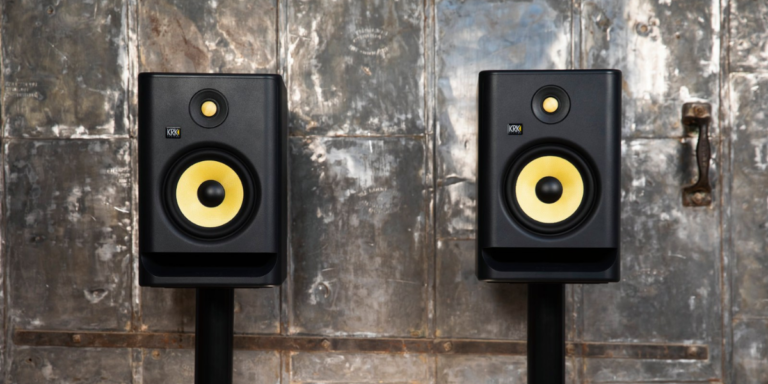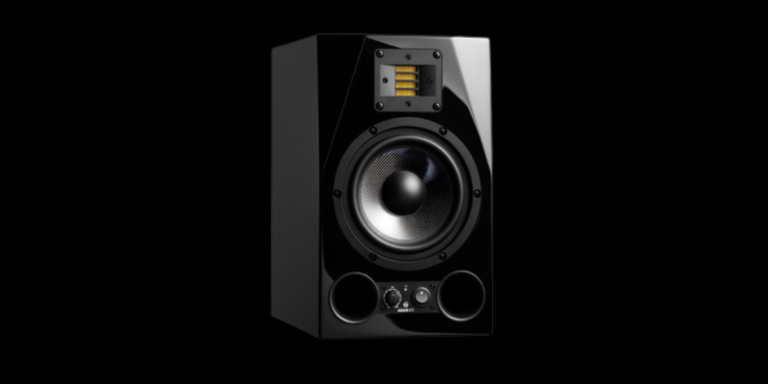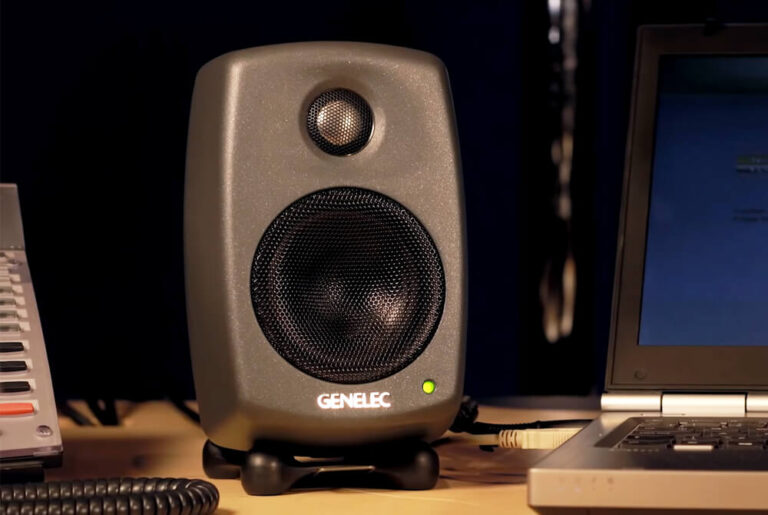Yamaha HS7 Monitor Review: Make Your Best Choice!
A sensational studio monitor is presented by Yamaha which is ideal for both starters and seasoned veterans who are looking for quality in their studio setup. It is the Yamaha HS7 which is part of the studio monitor giant’s entry-level range. In this review, we will take a closer look into the features that make HS7 stand out in the competitive realm of studio monitors.

Sound Quality: A Budget-Friendly Powerhouse
An excellent sound quality that contradicts its affordable price is what the Yamaha HS7 is proud of. It has a minimalist and clean design that matches its straightforward functionality. This makes in an incredible choice for those who are just starting and are hesitant to invest in a subwoofer.

The HS7 stands out, in terms of sound, across the frequency spectrum. The need for an additional subwoofer is discarded due to their substantial and well-rounded low-end. Although they are not as precise as more expensive alternatives, the mins are still clear without any muddiness. Moreover, the highs which are crisp and free from distortion add to the reasons why these monitors are perfect for analytical listening.

When it comes to the frequency ranges, the balance is admirable. You will not hear a single range that overpowers the soundstage. Furthermore, it is an ideal choice for studio monitoring as the HS7 specifically shines in acoustic and vocal. However, the narrow sweet spot within three feet must be always considered. This requires users to have accurate positioning to achieve optimal results.
Build Quality: Striking the Right Balance
Entry-level monitors are often questioned for their build quality, however, Yamaha managed to achieve a balance between durability and affordability. The HS7’s build quality exceeded expectations that are common for its price range. This monitor is a reliable investment for those who want longevity as it is made to withstand years of usage.

Specifications: Finding the Sweet Spot
In contrast to its name, the Yamaha HS7 highlights a 6.5-inch woofer, which is the ideal midpoint between the smaller HS5 and larger HS8. A balanced audio experience is guaranteed due to its 1-inch tweeter that navigates the mid and high frequencies. Furthermore, crispness in the high-end and depth in the low-end is achieved without distortion because of its 43Hz to 30kHz frequency response.
Tuning Options: Tailoring the Sound to Your Space
Additional features like Room Control and High Trim, as well as Level control for volume adjustments are the refined set of tuning options that the HS7 offers. High Trim is the one responsible for fine0-tuning the higher frequencies, while Room Control provides users the ability to adjust the low-frequency output. With just a flick of a switch, accurate and precise audio experience can be achieved while easily adapting to different studio environments.
Connection Options: Streamlined and Effective
When it comes to connection options, the HS range maintained its refined approach by making them straightforward. Flexibility in connectivity is provided as users can choose between an XLR connection and a ¼ inch TRS option. However, it must be noted that RCA input is not included that is why users will need to purchase cables separately. In order to preserve the sound quality of the monitor, we recommend you invest in high-quality cables.
Design Elegance: Yamaha HS7’s Aesthetic Appeal
The design can be a win or lose when it comes to studio monitors. Subjective and sleek aesthetic appeal are the ones that make the Yamaha’s HS range, including the HS, stand out. Unlike its competitors, it created a balance that is not too flashy or overpowering. This is due to its textured matte finish that radiated elegance and cleanliness.
A unique touch without being too loud is added to the monitor because of its matte black finish, complemented by the white woofer. Moreover, its low-resonance housing helped in making the monitor have a sturdier feel and it also enhanced its overall sound quality. The Yama logo inclusion further completes the look as it added a touch of brand finesse.
If you are looking for extra flexibility, the HS range also offers a white version. This is perfect for those who own pristine white studio furniture. Furthermore, install versions are available for a slightly higher price. However, it is furnished with mounting screws and points for convenient installation with compatible brackets.

Dimensions: Size Matters
Although the Yamaha HS7 has a 6.5-inch woofer, it larger-than-expected dimensions came as a surprise for everyone. Moreover, a robust feel is added to the monitor due to its 18.1lbs weight. But if you have limited work surfaces or smaller studio space, it is important to consider its size.
Value: Quality at a Reasonable Price
If you are planning to invest on the Yamaha HS7, you must know that it does not claim to be the cheapest entry-level monitor. However, it confidently claims to have a strong value proposition. As it features components that are of good quality, it has a balance between price and quality. It is a remarkable choice for beginners who are just setting up their home studios. This is because Yamaha is well-known for having a history that provides quality products which further reinforces the value for money.
What Others Have To Say: Yamaha’s Resounding Reputation
Yamaha has earned its spot as one of the most popular brands among novices and seasoned producers. One thing that solidified Yamaha’s position as a popular brand is the sound quality of HS7. The confidence that they instilled to potential buyers are from a long history of excellence and reliable after-sales that supported the brand’s allure.
Other Options: Exploring Alternatives
The competition is fierce in the world of studio monitors. For those who want to see more options with the same price range and size, here are a few alternatives:
KRK Rokit 7 G4

· KRK Rokit 7 G4 boasts with advanced features that made them known for having exceptional quality and professional acclaim. However, they have a premium price.
PreSonus Eris E7 XT

· Unlike the KRK Rokit 7 G4, the PreSonus Eris E7 XT comes with an affordable price. It may require some tuning, but it has a larger sweet spot which makes it a great value for beginners.
Mackie CR4-X

· The Mackie CR4-X targets budget-conscious buyers. It offers good sound quality but lacks tuning options.
Should You Buy? The Verdict
The Yamaha HS7 stands out as an incredible choice among the grand scheme of studio monitors. It is a compelling choice for both beginners and experienced producers due to its ample tuning options, durable build, clear and precise sound, and the backing of a trusted brand. Furthermore, its reasonable price tag makes it deserving as being in the prime spot on your list of studio monitor considerations.












